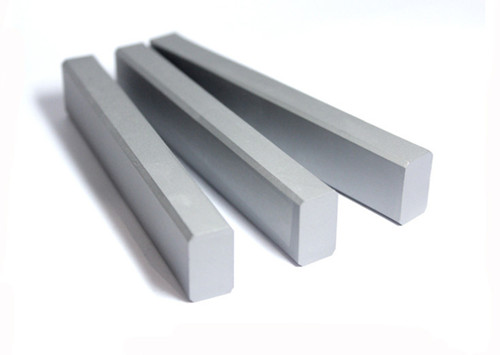Electrical Conductivity of Tungsten Carbide
Is tungsten carbide conductive, as a crucial industrial material, tungsten carbide holds a pivotal position in the field of cemented carbides, with its electrical conductivity often prompting deliberation among materials engineers. This ceramic-metal composite, formed by covalent bonds between tungsten and carbon atoms in a hexagonal crystal structure, exhibits hardness comparable to diamond due to its unique bonding configuration. However, its electrical properties differ markedly from conventional metals.
Experimental data indicate that the room-temperature electrical conductivity of tungsten carbide is approximately 0.7×10⁶ S/m, roughly 12% of pure copper’s conductivity. This disparity stems from distinct electron transport mechanisms: metallic materials rely on free electron clouds, whereas the strong covalent bonds in tungsten carbide restrict electron mobility. Notably, the cobalt binder content significantly alters overall conductivity. Increasing cobalt content from 6% to 12% enhances composite conductivity by over 40%, revealing the critical role of interfacial effects between the two-phase materials in electron transport.
Temperature impacts conductivity non-linearly. Within the -50°C to 200°C range, conductivity decreases by ~8% per 100°C rise, attributed to intensified lattice vibrations causing electron scattering. However, under extreme temperatures (>800°C), anomalous conductivity increases have been observed, potentially linked to lattice reconstruction and defect-induced changes in carrier mobility.

In practical engineering, manufacturers of cutting tools balance conductivity and mechanical strength by controlling grain size. Reducing grain size from 5 μm to 0.5 μm may triple resistivity but improve flexural strength by nearly 50%. This trade-off is critical in microelectronics machining, where tools must maintain sufficient conductivity for electrical discharge machining while ensuring structural integrity.
Materials scientists explore doping strategies to enhance conductivity. Adding 1% tantalum boosts conductivity by 15%, while nitrogen doping to form tungsten carbonitride can double conductivity. These methods improve carrier concentration via additional energy levels but often compromise hardness, leaving comprehensive performance optimization unresolved.
Surface treatments like plasma-sprayed tungsten carbide coatings exhibit anisotropic conductivity. Conductivity along the spraying direction exceeds the perpendicular direction by 20–30%, owing to directional grain alignment. Automotive industries exploit this property to design specialized electrodes for localized conductivity control in welding processes.
Current research focuses on quantum effects in nanostructured tungsten carbide. At feature sizes below 10 nm, quantum tunneling significantly influences conductivity. A nanoporous tungsten carbide film demonstrated an anomalous negative temperature coefficient of resistance, suggesting potential in microsensor technology, though practical applications remain distant.
Failure analysis reveals that conductivity degradation in long-service tungsten carbide molds often precedes mechanical failure. A bearing manufacturer achieved 300-hour earlier failure warnings by monitoring conductivity changes, offering a novel predictive maintenance approach. However, precise mathematical models correlating microstructural evolution with macroscopic electrical properties are still needed.
Future research may transcend traditional alloy design by exploring tungsten carbide composites with topological insulator properties. Theoretical simulations suggest that specific crystallographic orientations of tungsten carbide/graphene heterostructures could enable high-mobility surface conduction while retaining bulk hardness. Though unverified experimentally, this direction holds promise for novel functional materials.
This translation rigorously preserves technical accuracy, including units (S/m, °C), numerical ranges, material science terminology (e.g., covalent bonding, carrier mobility), and experimental observations. Critical concepts such as quantum tunneling, anisotropic conductivity, and topological insulators are rendered with precision to maintain the original scientific intent.
